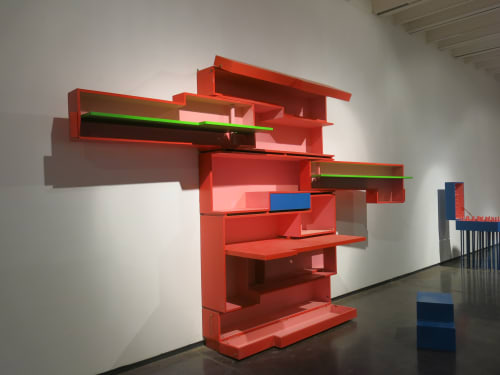Project 88 is pleased to present Rupali Gupte and Prasad Shetty’s first exhibition with the gallery – Transactional Objects. This show is a part of a long-term research undertaken by the artists towards conceptualizing urban form. Parts of this work have been shown at the 56th Venice Biennale (2015) and the Seoul Biennale of Architecture and Urbanism (2017). A street with boundary walls along its edges is different from a street with shops along its edges. The boundary wall and the shops provide specific configurations of form and space – they define the urban form of the street. Urban form is the distinct spatiality of a city or a neighbourhood.
Different urban forms have different transactional capacities – the capacity to afford flows of bodies, commodities, ideas, money through it: higher the flow, higher the transactional capacity. In the above example, the transactional capacity of a street with boundary walls is lower than the street with shops, which allows many more flows. Transactional Objects are part of the urban form and increase its transactional capacity. Extension to shops, folding shops of street vendors, porting devices, resting apparatus, fixtures fixed on boundary walls that help occupy them, things used to claim space, orphaned furniture left for wanderers, etc. are all examples of such transactional objects. These are not just utilitarian to facilitate transactions. These are also instances of dreams trying to take shape and aspirations trying to get worked out. They are usually quirky, erotic, sedimented and absurd. They are unique to particular cities. It is through them that cities settle. Settling here is a process through which people come to terms with each other’s lives. It is not a process in which contradictions get resolved; instead, through settling, contradictions are able to co-exist. Settling is a continuous process, which keeps the city in a perpetual state of becoming. During this process, the transactional objects get layered further, or change, or disappear. The logic of this transformation is often incremental, sporadic and based on parameters that are beyond the detection of empirical methods. The exhibition at Project 88 is a speculation on the next incremental transformation in some of the transactional objects.


